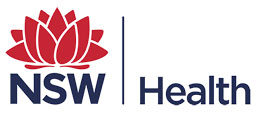In Australia, many computed tomography (CT) scans are performed on children and young people each year. CT is a valuable diagnostic tool, especially in emergency situations. However, CTs use higher doses of radiation than other types of medical imaging tests, and their use in childhood or adolescence has been linked to a slight increase in developing cancer later in life.1
Children and young people may also undergo a cone beam computed tomography (CBCT) scan as part of their oral health care. CBCT scans can provide dentists, orthodontists and surgeons with important information to help them with decisions regarding oral health care. While typical radiation doses in cone beam CT are much lower than those used in medical CT, use of radiation in oral health care should also be kept as low as possible.
Information for parents
If your child has had a CT or a CBCT scan, or may need one in the future, do not be alarmed. Talk to your child’s doctor or dentist about the benefits and risks of the test. You may want to ask:
- how the test will improve your child’s health care
- whether there are alternative imaging options, and
- if a CT scan is necessary, how the radiation dose will be kept as low as possible for your child.
Always let the doctor or dentist know about any other scans your child has had and take any previous scans with you to appointments.
If your child is referred for a CT or CBCT scan, it is important for you to remember that a scan which is warranted, will almost always result in more benefit than harm to most patients.
The Australian Commission on Safety and Quality in Health Care (the Commission) has partnered with the Association for the Wellbeing of Children in Healthcare and NPS MedicineWise to develop a brochure that answers questions that you may have if your child needs a CT scan. A companion poster has also been developed by these organisations for display in doctors’ practices, medical imaging services and early child health services.
In partnership with the Australian Dental Association and other dental organisations, a brochure for parents and carers and a companion poster on CBCT have also been produced.
Support for health professionals
To support doctors requesting CT scans, the Commission has also partnered with the Australian Radiation Protection and Nuclear Safety Agency to update a fact sheet providing information on CT scans for children, including the typical radiation doses for various scans.
To support all people involved in the CT patient journey, the Commission has partnered with Healthdirect Australia to establish a web page dedicated to hosting these and other resources on CT scanning for children and young people. Visit www.healthdirect.gov.au/ctscansforkids for access to the fact sheet, brochures, posters and videos and interactive tablet games to assist parents and carers to prepare a young child for a CT.
For more information about CT scans for children and young people, visit www.healthdirect.gov.au/ctscansforkids.
_________________________________________________________
1 Mathews JD et al. Cancer risk in 680,000 people exposed to computed tomography scans in childhood or adolescence: data linkage study of 11 million Australians. BMJ.2013;346:2360
Dimity Herden
Senior Project Officer
Australian Commission on Safety and Quality in Health Care




